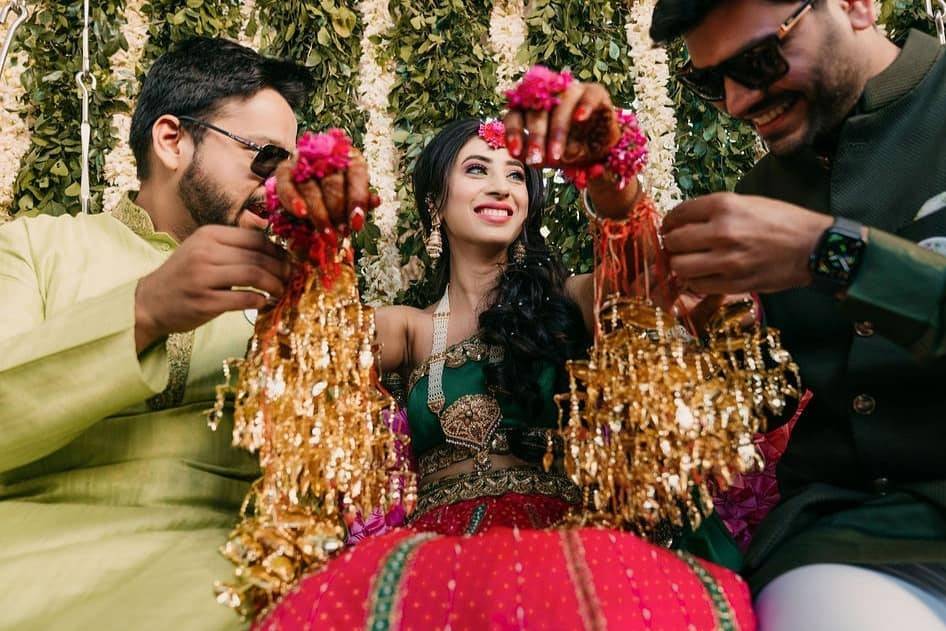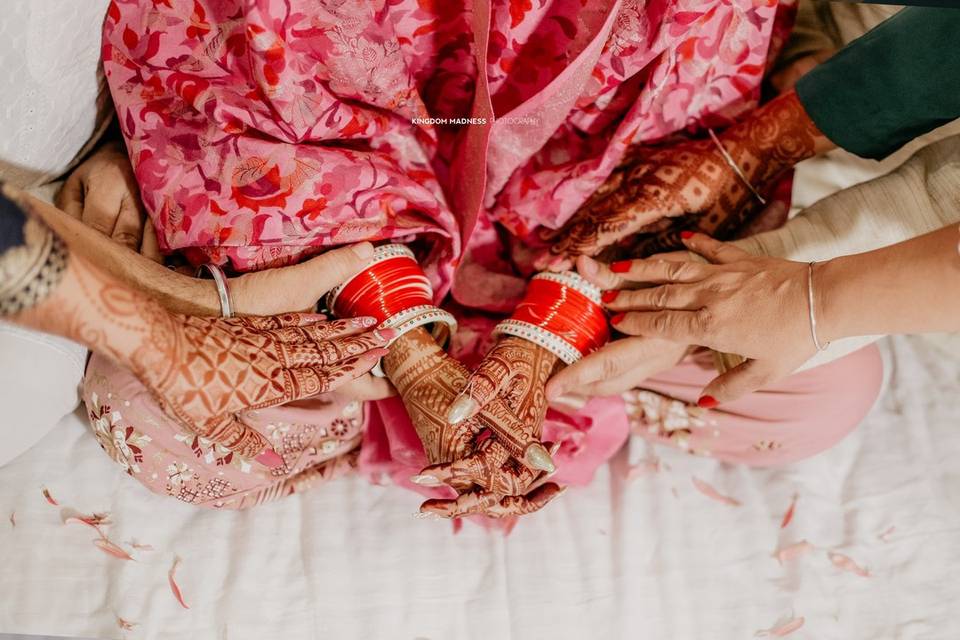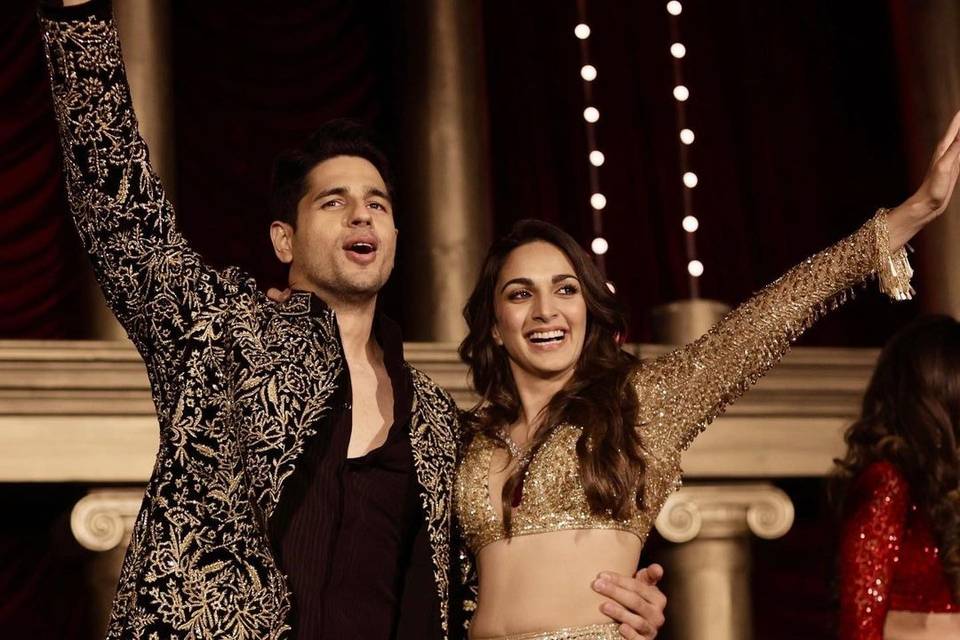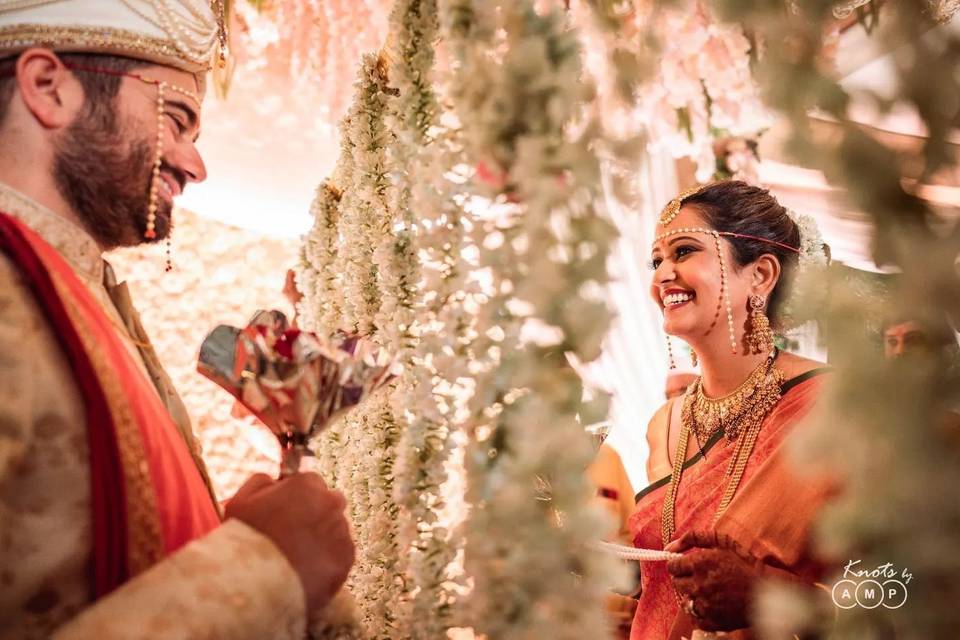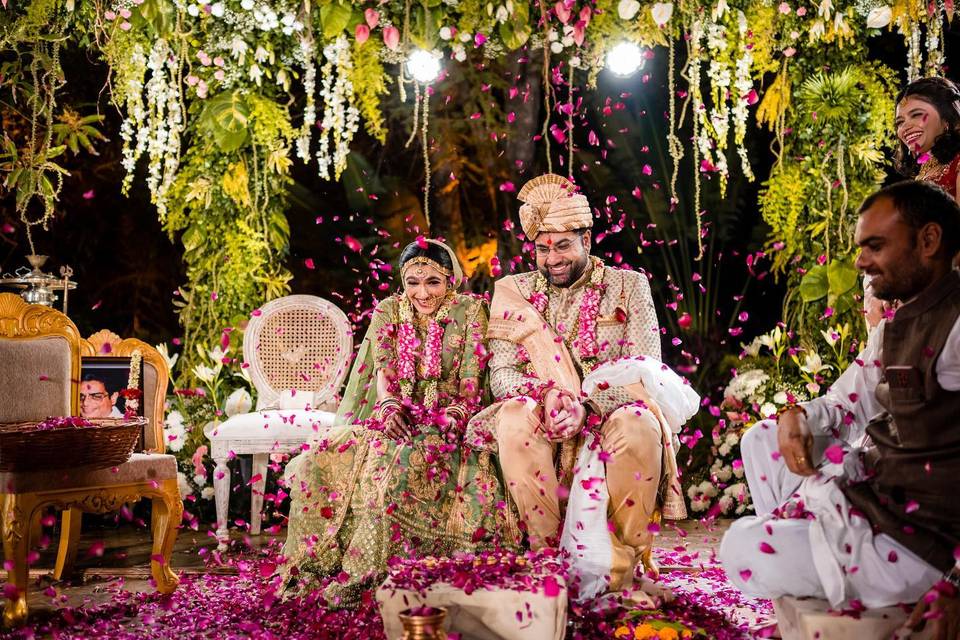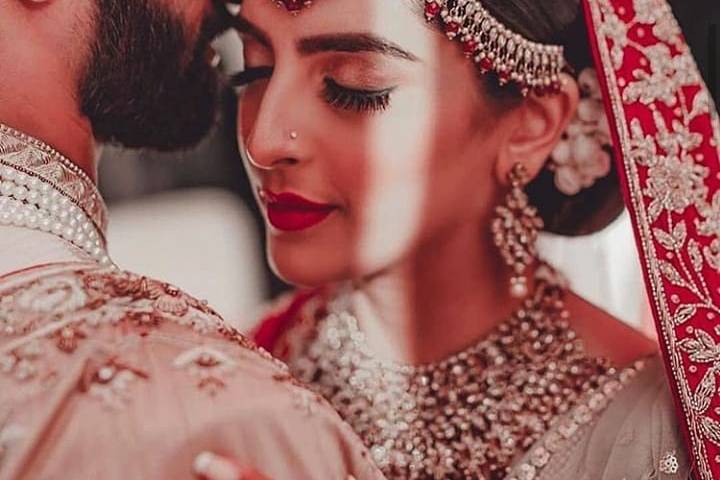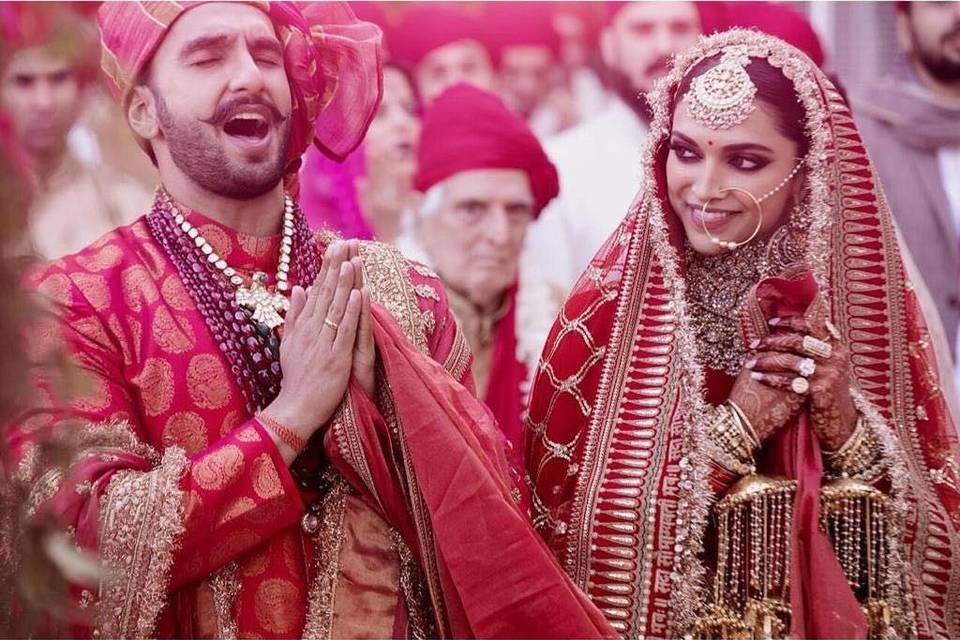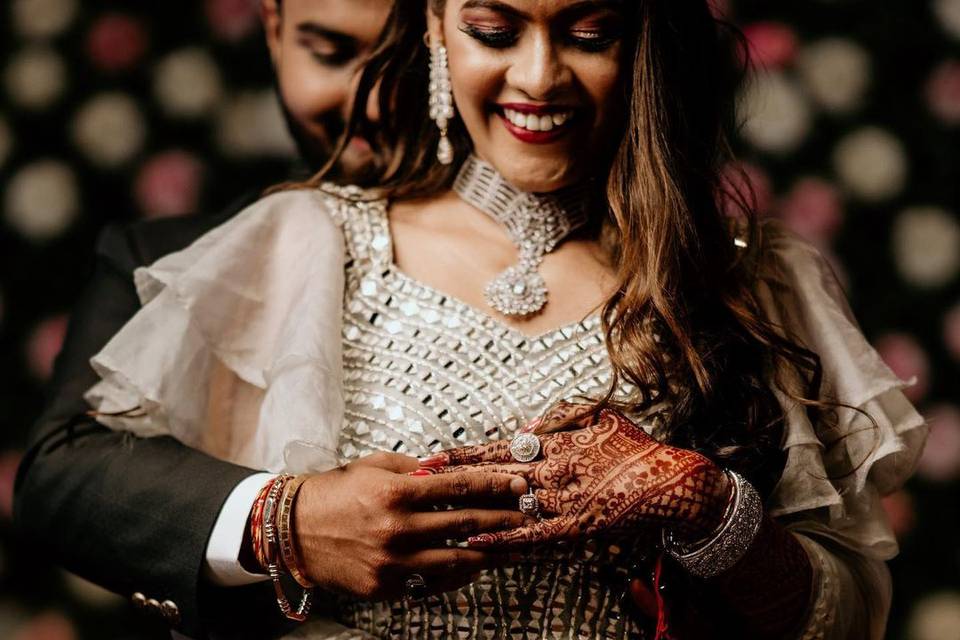Your Guide to the Sacred Thread Ceremony in Brahmins Before Marriage
Did you know that the Thread ceremony or Upanayana is an important Brahmin ritual for the groom-to-be? Let's learn more about it and how to celebrate it.
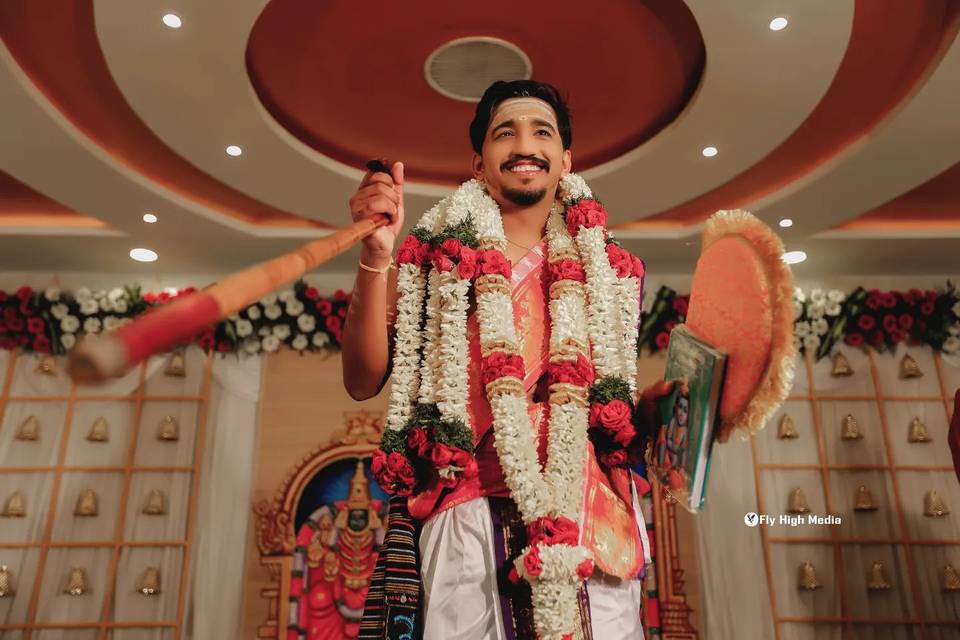

Photography: Fly High Media
When we mention the term 'Thread ceremony', the first thing that comes to mind is the Janeu ceremony, performed when a male child is formally welcomed into the world of learnings and Vedas. But very few people know that this tradition marks a spiritual ceremony conducted for the groom-to-be, just before he enters into holy matrimony. We share an overview of what this sacred thread ceremony is all about and ways of celebrating it. Let’s find out!
In this article:
- What is a Thread Ceremony among Brahmins?
- Thread Ceremony Names in Different Cultures
- Thread Ceremony Wishes
- Gift Idea for Thread Ceremony
- Thread Ceremony Decoration Ideas
What is a Thread Ceremony among Brahmins?
Photography: Watermark Studios
Many Hindu communities follow the ritual of Upanayana, or Yagnopavitra for all the male members of the family when they turn eight years old. However, more orthodox castes hold the thread ceremony for an adult male, a few days before his marriage as well. The Brahmin thread ceremony consists of offering three strands of a sacred white thread, with each representing a holy vow. These three vows represent his promise to his family to take over all the family responsibilities and adhere to the rules of the society, in which he lives. The three threads of the vow are tied into a knot known as Brahmagranthi, or the knot of Brahma. These three threads also represent the three Hindu trinities: Shiva, Vishnu, and Brahma.
Thread Ceremony Names in Different Cultures
Photography: Iswarya Photos
The Hindu communities of different regions have different names for the thread ceremony in regional languages. The sacred thread ceremony is widely known as Upanyayanam in Sanskrit and Tamil. The thread ceremony in Hindi is called Janeu. Thread ceremony, meaning in Telugu, means 'the act of leading to or near' and is known as Odugu or Upanayanamu.Thread ceremony in Kannada is called Upanayana or Munji. Munja, or thread ceremony, meaning in Marathi, is the start of a new disciplined life of knowledge. While the thread ceremony in Odia is called Brata Ghara, in Assamese it is known as Lagundeoni. Uponayon is what we call a Bengali thread ceremony and in Kashmiri, it is called Mekhal.
Thread Ceremony Wishes
Photography: Studio Untitled
If you have the opportunity to attend the holy thread ceremony of a groom-to-be, then these sacred thread ceremony wishes in English will help you congratulate him well. Take a look:
- May Lord Vishnu ji bless you with happiness, prosperity and his divine grace on this auspicious day. Happy Upanayanam to you!
- On this holy day, I wish for you to find the path of righteousness, with all the blessings of Lord Vishnu upon you. Stay blessed!
- Congratulations on your Janeu ceremony! May god bless you with happiness, peace, love and a path of truth and wisdom.
- My blessings are with you, as you begin your journey of righteousness. May the blessings of Lord Shiva, Brahma and Vishnu help you carry forward your family responsibilities with truth and strength.
- Heartfelt congratulations on tying the knot of Brahmagranthi. May this new chapter in your life be filled with happiness, love and prosperity. Happy Janoi ceremony to you!
- Congratulations, as you embark on a journey of responsibilities and carry forward the family name. We are all very proud of you.
- We cannot contain our happiness, as your Janoi ceremony is the first of your new beginnings as a groom-to-be. Happy Mekhal to you!
- Heartiest congratulations on your spiritual growth as you step into the knot of holy matrimony. Our blessings are always with you.
- May you find inner peace and wisdom, as you tie the knot with Janeu today. Congratulations on this beautiful journey ahead.
- May this thread ceremony of Brata Ghara bring you closer to your family, bring love and happiness into your married life, and take you on the path of righteousness.
- Congratulations are in order as you embark on a spiritual journey full of family wisdom and blessings. We are very proud of your special milestone.
- As you tie the knot of Brahma today, may Lord Vishnu's blessings help you lead a life of happiness, success, spirituality, and blessings in every aspect of your life.
- Best of luck with your Odugu ceremony today. I hope you find the divine light of wisdom and seek a life full of peace, contentment, and happiness.
- Today, as you take over the family responsibilities and tie the Janeu knot of Lord Brahma, we want to tell you that we are proud of you and our blessings are with you.
- May the blessings of the Almighty be with you always. Have a blessed Upanayanam ceremony today!
Gift Idea For Thread Ceremony
Wedding Gifts: House Of Rasiwasia
Along with the wishes and blessings for the groom-to-be on his Janeu ceremony day, a well-thought-out gift makes the congratulations even more wholesome and memorable. Here's a list of gift idea for thread ceremony for you!
Curated Food Hamper
Wedding Gifts: Curated By Elysian
A box full of the groom’s favourite snacks tops the list of thread ceremony gifts. These can also be curated as thank-you return gifts for thread ceremony, for all the attendees.
Mithai Platter

Wedding Gifts: Myraa Redefining Luxury
The best way to celebrate the Brahmin thread ceremony is by doing Muh Meetha. A platter of Indian sweets can make for a great gift idea for thread ceremony.
Box of Fragrances
Wedding Gifts: Floral India
Another much-loved gift for celebratory occasions is the gift of a beautiful bouquet, consisting of seasonal and imported flowers. Don’t forget to add a handwritten note of thread ceremony wishes with it.
Pure Silver Idols

Wedding Gifts: Purans Ornaments
The most auspicious gift items for thread ceremony have to be pure silver idols of any of the trinity Hindu gods.
Assorted Set Of Teas
Wedding Gifts: Chado Tea
If the groom-to-be is a fan of Chai, then a box of teas will be a great gift for him to relax and unwind with.
Silver Puja Thali
Wedding Gifts: Argentor Silver
Every Hindu ceremony includes a Puja thali to perform all the rituals. By gifting a silver Puja thali for the ceremony, you will extend your blessings for the groom-to-be, at an intimate level.
Skincare Hamper For Men
Wedding Gifts: Omorfee
Why should only women have all the skincare fun? Gift the man a hamper of assorted skincare products that he would love to pamper his skin with.
Basket Of Fruits
Wedding Gifts: The Fruit Hut By Mdhur Bajaj
Fruits are a symbol of health and wellness. Consider a basket of fresh fruits as gift iems for thread ceremony. Smaller hampers of such baskets can also be ordered as return gift ideas for thread ceremony.
An Art Collector’s Gift
Wedding Gifts: The Decor Kart
For those who love collecting art, a beautiful showpiece will be a great gifting idea for the thread ceremony. This gift will remind him of you and his auspicious thread ceremony day, forever.
A Perfume Hamper
Wedding Gifts: Perfume Lounge
Just like women, even men love owning a variety of Eau De Parfums. Gift him a hamper with different perfume bottles that he will enjoy trying.
Thread ceremony decoration

Wedding Decorators: Melodia Events
Usually, thread ceremonies are performed low-key, unlike preparations for other wedding ceremonies. But even so, a nicely decorated thread ceremony background helps in capturing beautiful thread ceremony photos to cherish forever. Here are our top picks on thread ceremony decorations that you can opt for.
Grand Temple Mandapam
Wedding Decorator: Aishwaryam Wedding Decorators
A temple mandap background is our top pick among other thread ceremony decoration ideas. The presence of idols of the gods and goddesses will make the venue auspicious and the replica of the temple entrance gates will give the attendees a feeling of being seated inside an actual temple.
Enchanted Forest

Wedding Decorator: Konduit Solutions
Thread ceremony pictures will come out well against a backdrop consisting of beautiful floral decorations. Hanging floral decorations on the ceiling with a lot of greens included will give the impression of being inside a colourful forest.
All Green Thread Ceremony Background
Wedding Decorators: Sarva Wedding Planners
Purity and sanctity define the cultural significance of banana leaves in South Indian Hindu traditions. A background made entirely of freshly plucked Banana leaves will give a remarkable contrast to the all-white thread ceremony.
Chettinad Thread Ceremony Decoration
Wedding Decorators: Wedding Chakra
Ask your wedding decorators to give you a traditional Chettinad house courtyard set up as a background for the thread ceremony. The white fragrant Tuberoses amalgamated with the different designs of Kolams will create a never-seen-before thread ceremony background.
Beach Thread Ceremony
Wedding Decorators: The Camellia Events
Let nature work its magic in the aesthetics department. If you are gearing up for a beach wedding, how about you get the thread ceremony done at the same wedding venue as well?
Some traditions are meant to be adhered to religiously and thread ceremony is one of them. All the information we have provided you with will help you gear up for your own or someone's thread ceremony in the right manner. The cultural importance of thread ceremony, how to wish, what to gift and thread ceremony decoration ideas will work as a guidebook on this tradition.

















